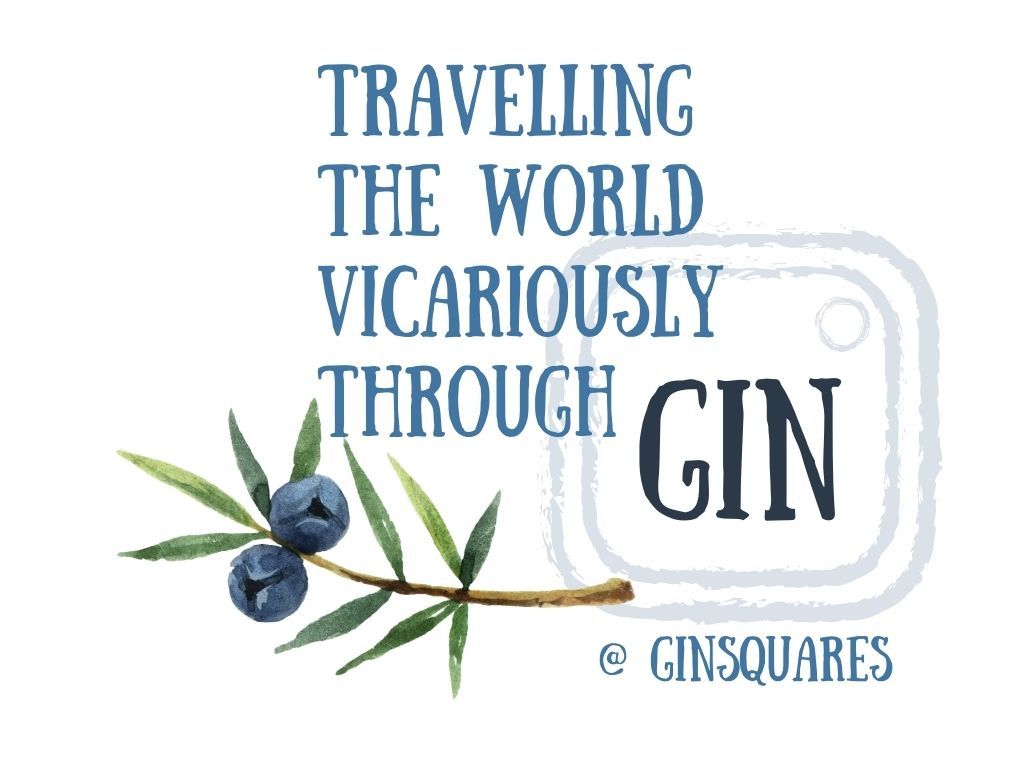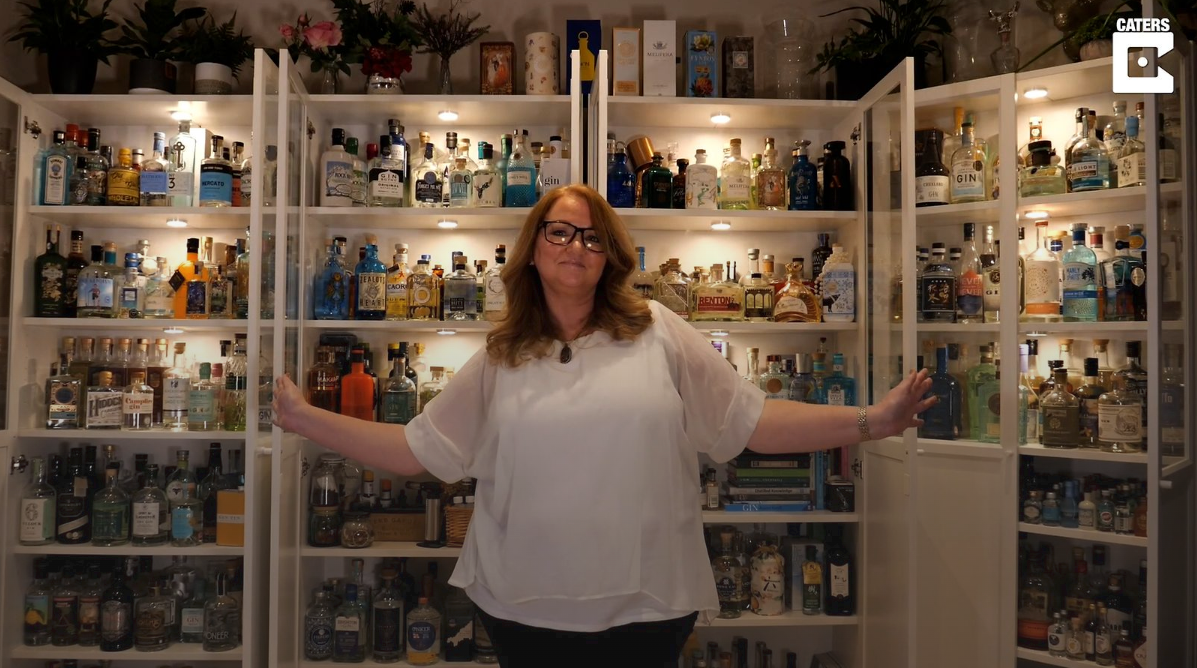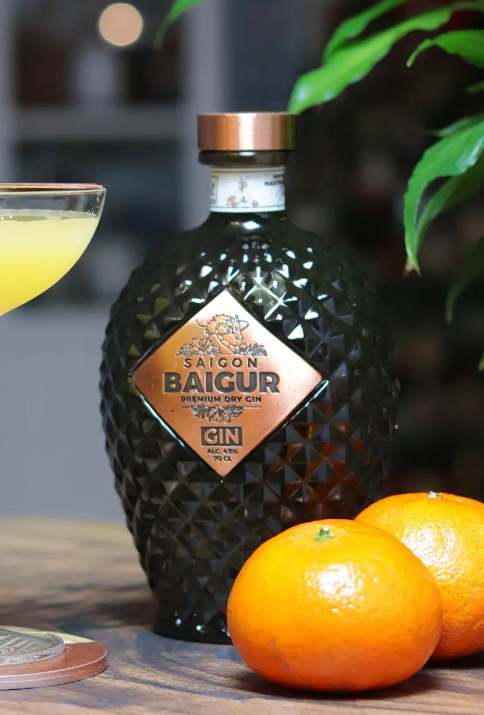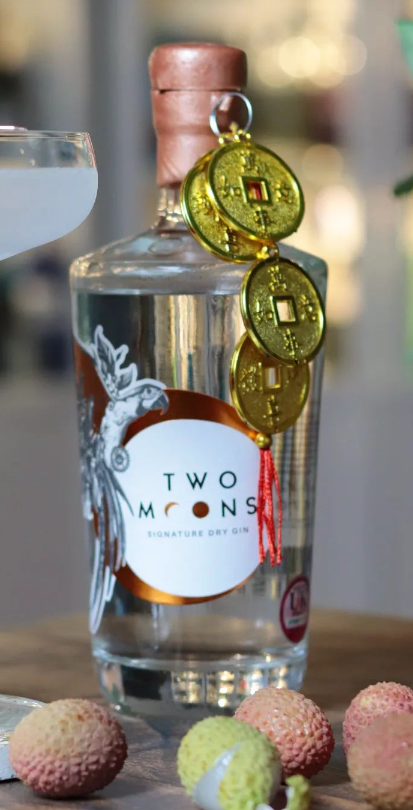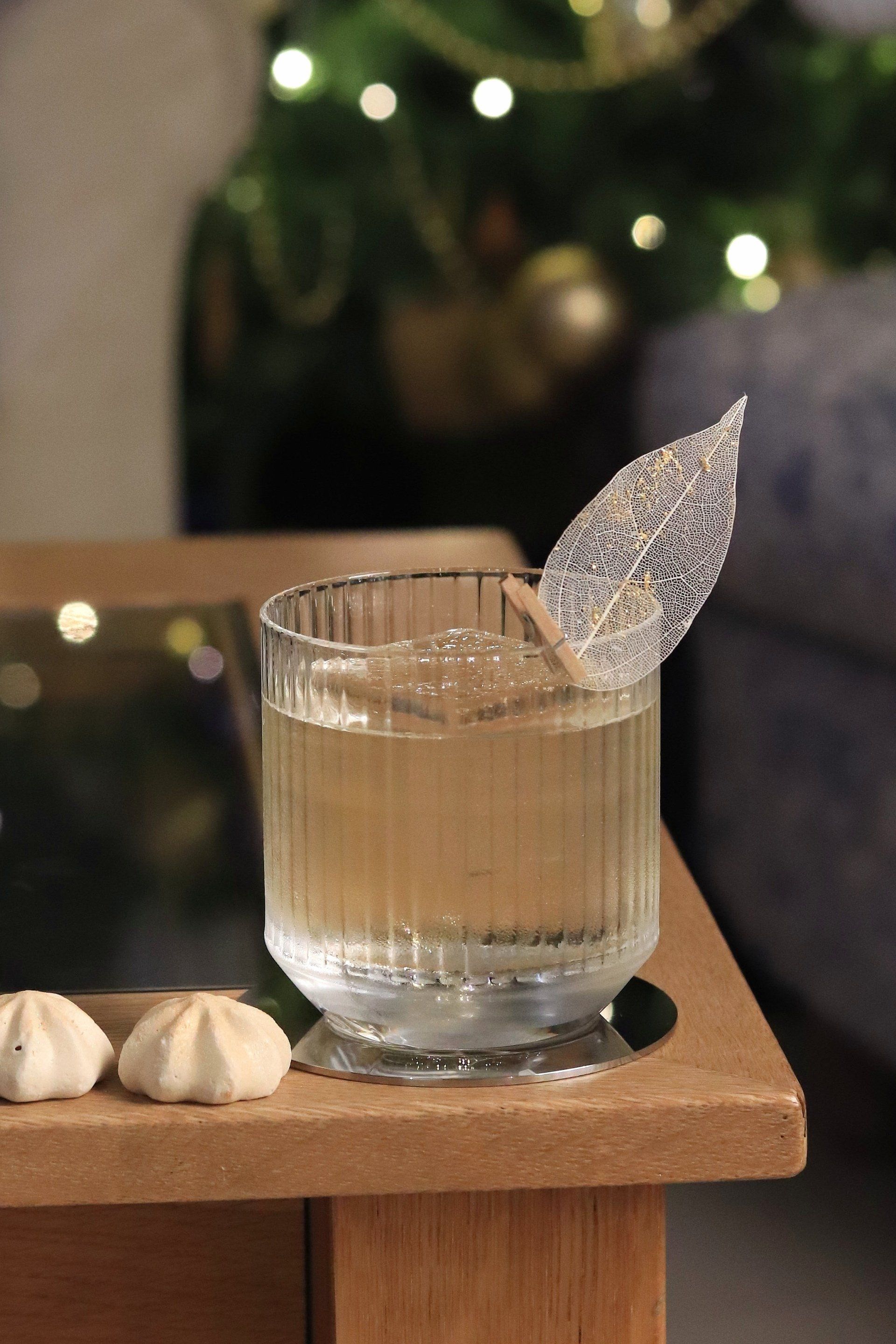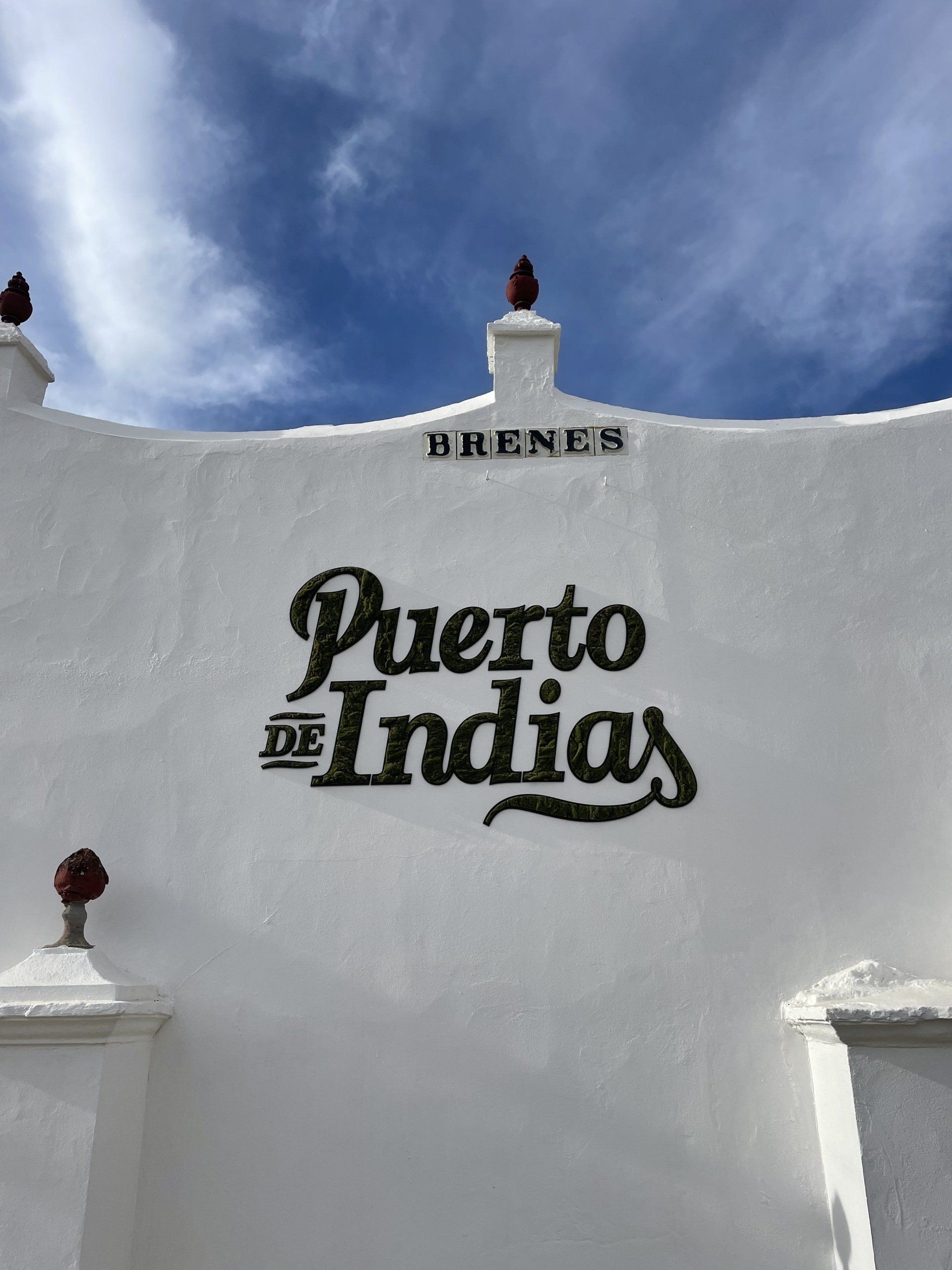MY GIN COLLECTION FROM AROUND THE WORLD

It's no secret that I've a rather large collection of gin, but not for a minute do I believe it's the largest collection that exists and I've been adding to it for several years. Only recently have I moved the collection from 4 or 5 different cupboards and drawers into one place, mainly so that I can see what I have and easily get to it. My initial thought was, perhaps it will stop me buying more gin when I see how much I have, but I very much doubt that will be the case!
After recently sharing a photo of the collection on the ITV This Morning Facebook page and having had it shared on their programme, I was approached by a journalist who thought it was newsworthy stuff. I've been sharing stories about brands and their locations through my virtual tours for several years, but thought it was perhaps time to share a bit about myself and how I got into blogging. Unfortunately journalists love to twist things slightly to make them more newsworthy, so the article published in The Sun this weekend was pimped up a little and not totally accurate, but hopefully any further articles published will be corrected and include some of my favourite gin stories as well.
Edit: New Article in The Daily Mail
on 31st January 2022. I'll take being obsessed on the chin, but the headlines are so sensationalist! I guess that's what sells stories!
Edit: More babblings of a ginthusiast! This was totally unscripted and unprepared and my enthusiasm clearly shows! My collection on Youtube.
Here is my story that I shared with them!
I have been collecting gin for many years after falling in love with the traditional G&T which I first recall drinking inflight on trips back and forth from my birthplace of Cape Town, South Africa.
After dropping in at a local gin distillery on a day out several years ago, I became more interested in how gin was made and began to plan visits and outings to local gin distilleries, even making my own gin at several of them. Since then, my collection has grown exponentially and includes gin from all around the world.
The most sensible way of keeping track of what gin brands I had tried, was to set up an Instagram account and post photos of them all. Over the past few years my knowledge around gin has improved and I have learned the styles that I enjoy and become more interested in the stories behind the brands and locations of the distilleries. As the gin blog grew and changed over the years, I do now find myself occasionally approached by brands who gift me bottles to photograph and review and I was also on judging panels for the World Gin Awards 2022. As a staunch supporter of the gin industry, the vast majority of my collection is bought and paid for my myself. I never set out to be a blogger or influencer and am still not comfortable with that title and consider myself more a ginthusiast, so I see it as my responsibility to support the industry as much as I can. Yes, it's cost me thousands of pounds over the years but I see it more than a collection, as I also travel vicariously through it.
My other jobs include being a self-employed silversmith and I have been making bespoke jewellery since 2007. Following the gin boom a few years ago, gin has become quite topical and an interesting hobby for many people. After visiting my first distillery, you could say I have manipulated my social life around gin and love meeting with ginpals as well as distillers and learning about how they got into gin. I have realised that each bottle has a really interesting story behind it. Sometimes that story is about the distillers themselves but often my research uncovers legends or myths or I learn a bit of history about their location.
The majority of the gin I buy cannot be sourced in supermarkets, but there are some amazing gins from the UK and around world that you can easily get hold of either directly from the distillers or online at specialist spirits retailers. I used to import a lot of gin from Europe but post-Brexit, the costs are too high, so I am no longer able to source new and interesting brands as yet unavailable in the UK. It's very frustrating for me and most of my gin-loving friends in both the UK and Europe and Brexit has resulted in loss of revenue for many small distilleries on both sides of the Channel, who could previously export small quantities but now struggle to get their heads around all the paperwork and duties.
I have gin from around the UK and most countries in Europe but my collection also includes gin from every continent - well apart from Antarctica, which is a protected territory, so you can't use any botanicals that may grow in the region to make gin!
Most of my collection has been sampled, but I do have some rarer bottles which I'm loath to open until I have the time to sit down and enjoy them for what they are. There is a misconception that gin bloggers drink a lot! You'll usually find me on the sofa with a brew.
During the pandemic, I wasn't able to go and visit distilleries or travel abroad, so I started travelling vicariously through my gin collection and planning virtual tours around Europe, Scotland and even did 80 (gin) days around the world, which I posted daily on my Instagram feed and am currently trying to transfer onto my website. I promised myself I would add each post daily, but almost a year later, I still haven't done this and am already starting to think about which region (of my collection) I should next explore properly! Europe and Scotland vitual gin tours are live on my website, so even if you aren't on social media, the stories are there for everyone to enjoy.
I found a lot of hidden stories behind gin or their location and I love writing and researching so the blog enables me to share my findings. It's become a passion and my followers love my stories and find them interesting and egg me on to do more! Tasting gin is very subjective and there are enough gin reviews available. I like to think that I offer a different perspective on gin. Show me a bottle and I'll tell you a story and some of those stories are definitely worth sharing. I spend days sometimes researching a particular brand until I find something interesting to write about it - there is a lot of outside of the box thinking!
My collection is continually growing and I dread to think how much I've spent on gin over the years. A number of the international gins I have are exclusively available through gin subscription companies, so it's taken a lot of time to build up the collection and I'm constantly looking for new and interesting bottles to add.
As the world opens up again after the pandemic, I am hoping that I can turn the virtual gin tours into real ones and visit more distilleries in person - UK and abroad - and maybe one day I'll get to publish a book on all the stories I've gathered along the way!
MY FAVOURITE 10 GIN STORIES:
Full disclosure - I have included in this list some bottles that were gifted to me over the years.
1. Melifera, France (this gin was gifted to me)
This gin not only tells the story of Eleanor, Duchess of Aquitaine, Queen of France and Queen of England, but is also about nostalgia and capturing childhood memories. An amazing gin from the Island of Oleron off the west coast of France - organic, handcrafted and also helping to protect the European Black Bee.
Excerpt from my blog on Melifera:
Off the shores of the Côte d'Argent a fortress island sits proud of the Atlantic Ocean. An island of legends, with beautiful white sand beaches, herbaceous marshes and untamed pine forests where nature reigns.
Off the shores of the Côte d'Argent a fortress island sits proud of the Atlantic Ocean. An island of legends, with beautiful white sand beaches, herbaceous marshes and untamed pine forests where nature reigns.
Scattered around the sun-kissed island are small villages, with old world charm, but for a bit of tranquillity, head to the sandy dunes, where bright immortelle and grasses scent the air. Here you can sit and reflect, whilst watching the gentle waves rhythmically wash the shore and taste the salty, sweet air on your lips.
Once populated with wild beasts and game and the playground of royalty, this island gave birth to an heiress whose wealth, power and beauty made her one of the most eligible brides in Europe during the Middle Ages. Like the immortelle flower, the history and legends around her do not fade.
Eleanor, Duchess of Aquitaine, Queen of France and Queen of England.
The spirit of Eleanor lives on and Christophe and his wife Cécile were kind enough to send me their beautiful, handcrafted and organic gin, which is not only a tribute to Eleanor (Alienor), but also to the island of Oléron and of course, the immortelle flower.
For them, creating a gin was all about nostalgia - capturing childhood memories of days spent on sandy beaches and returning home with sun-kissed faces, damp hair and salty skin. It's about appreciating nature at its finest whilst watching the sun set over the sea as you curl your toes in the warm sand and fill your lungs with the sweet scent of the air surrounding you.
2. Bareksten, Norway
The dark and dramatic design of this bottle hints at more than just the harsh Nordic forests where Stig Bareksten forages for botanicals. It also tells the story of the Huldra - beautiful wardens of the forest, who live beneath the roots of old oaks and lure men into the forest with their singing.
From my blog on Bareksten Gin:
It is on the west coast of Norway, in the dense forests where the sunlight struggles to penetrate to the ground and where legends and folklore have their origins, that Stig Bareksten forages for the botanicals for his spirits in hidden locations that only he knows. Having distilled all sorts of botanicals from a young age, he has a mental catalog of every scent, taste and mouthfeel you can imagine and by having this knowledge, he has managed to create a complex and beautiful gin. The botanical list goes on and on and includes your regular suspects of course, but also many local organic ingredients including fennel, rosehips, rose flowers, elderflowers, lingonberries, citrus, spices, lavender and many more.
It is on the west coast of Norway, in the dense forests where the sunlight struggles to penetrate to the ground and where legends and folklore have their origins, that Stig Bareksten forages for the botanicals for his spirits in hidden locations that only he knows. Having distilled all sorts of botanicals from a young age, he has a mental catalog of every scent, taste and mouthfeel you can imagine and by having this knowledge, he has managed to create a complex and beautiful gin. The botanical list goes on and on and includes your regular suspects of course, but also many local organic ingredients including fennel, rosehips, rose flowers, elderflowers, lingonberries, citrus, spices, lavender and many more.
The black bottle with shadows of twisted branches is dark and dramatic, yet inside the liquid is fragrant, delicate and clean. It is intended to represent the essence of Norway - a sweet and seductive liquid birthed from the harsh Nordic forests where the Huldra spirits live beneath the roots of old oaks.
The Huldra are one of several wardens of the forest and are beautiful women with flowing blonde hair, who lure men into the forest with their singing. They are sometimes naked but often dressed in long white robes and blue petticoats, which hide their cow's tail and hollow bark back. The Huldra is a protector of the cattle on the mountainsides and offers rewards to those who satisfy her sexually and death to those who don't. It is told that should a Huldra convince a human male to marry her, as long as her tail remains hidden during the courtship, it will fall off on their wedding day, but that he will also never be seen again.
The branding and folklore are intertwined and whilst both dark and playful, capture audiences worldwide. I've decided to play on this and create a cocktail with the light and white frothy liquid representing the Huldra's hair and robes, but with just a little bit of her blue petticoat showing.
3. QVT, France (this gin was gifted to me)
I'm a sucker for a bit of romance and the story of QVT started in Africa, where the distillers met many years ago and after having travelled around Africa for several years, they decided to settle in Provence and create a gin inspired by their surroundings.
From my blog on QVT:
I'm never sure if I love the story or the gin more - there's no right or wrong answer but knowing how and why a gin was created makes it so much more interesting to me! Add a little romance to the backstory and I'm hooked!
QVT is one of those gins that I've seen in many posts and they also featured with CGC several months ago - a month I had skipped. With so many new gins about, brands are competing for space on our gin shelves and unfortunately their gin or special edition just didn't make it onto mine until recently, when @casuals_jigger offered to send me a taste of Provence!
Like many artists and visitors to Provence, distillers Anna and Justin also fell in love with the region and decided to settle there after many years of travelling around the world. They had met in Africa and fell in love over sundowner G&Ts (well, I would like to think they did!).
British-born Justin was designing safari lodges there since the early 1990s. He later contracted for the UN and US State Department and it was under the African skies that he met Swedish health economist, Anna, who was helping to develop health systems across the continent. They travelled together around Africa for several years but decided to rethink their lifestyle and settle in a safer and more stable environment after having children and spent some time in Switzerland. This wasn't to be their forever home and after spending time in Provence, they realised that this was where they wanted to bring up their family and moved there in 2013.
One thing was missing though - gin! And so QVT was born in 2019 after several years of research and taking inspiration from all that Provence has to offer.
4. Larios, Spain
This is one of my favourite gin stories and never would I have imagined my research would uncover the skeletons in the Larios closet! In 2010 a Spanish trumpeter claimed to be the rightful heir to the Larios gin fortune saying he was the illegitimate son of the Fourth Marques de Larios. Accusations, exhumations and DNA testing - boring gin....I think not!
From my blog on Larios:
Whilst certainly not the best gin I've ever tried, this gin has its origins in Malaga and it dates back to 1866, when a French entrepreneur and Spanish associate got together and founded a distillery – Jimenex & Lamothe. In 1916 the Third Marques de Larios bought the distillery and the brand Larios was born.
The Larios family are undoubtedly a wealthy family, with roots in Malaga from the early 1800s. The family split into two with one half heading to Gibraltar, where they were very influential and successful (if not a little shady!) merchants, whilst the Malaga branch was at the forefront of urban development of the city. When the well known shopping street, Calle Larios, was being constructed in 1880, the local government needed to raise 1million pesetas and did so by selling shares, which were mostly bought up by the Larios family, who took over the responsibility for the project - the street is named after the Second Marques. Having historically invested and traded in all sectors of the economy, their main focus is now real estate.
Most families have a skeleton in their closet and it appears so does the Larios family! In 2010 a Spanish trumpeter claimed he was the rightful heir of the Larios gin fortune, as he was the result of an affair between his mother, a cook for the Larios family and the Fourth Marques de Larios (who had no children). The Marques was exhumed and the DNA results didn’t support this, but it didn’t end there. Accusations have been flung about, which include suggestions that the family moved the body to prevent DNA testing, as well as suspicions now being raised as to how the Marques died. Two books have even been published - The Poisoned Inheritance of the Marquis de Larios & Assassination, Freemasonry and Francoism ( The poisoned inheritance of the Larios. Part II ).
Suddenly Larios becomes more interesting!
5. 44N, France
(this gin was gifted to me)
A beautiful blue bottle which not only celebrates Yves Klein, an artist born in Nice in 1929 who developed his own unique pigment - International Klein Blue - but also captures the essence of the South of France.
A different perspective on 44N Gin:
I've delved a lot into the backstories, interesting facts and obscure tidbits about brands and their raison d'etre - the reason why they exist or came about and I'm going all French and arty on you all for this one!
As a jewellery designer and creative, this is the sort of stuff that interests me and I've always been drawn to the colour blue, as was Yves Klein. Klein was born in Nice in 1928 and was one of the most controversial and prominent artists in the 1950s but he was best known for developing his own unique pigment - International Klein Blue IKB. He developed this colour with the help of a chemist, in a bid to find a blue that would not fade like others did. The blue is his legacy to the world - his way of helping us all unlock the infinite and the sublime through a single, pure colour. For him, blue suggested infinity and erased the division between earth and sky and he wanted it to unlock our imagination and be inspired by it.
His most controversial exhibition was called The Void. It was an entirely empty gallery painted white but people queued in their hundreds to see it. He created excitement and mystery by only allowing 10 people in at a time and he served them a gin-based cocktail, which turned their urine his iconic Klein Blue!
Not only does Klein Blue capture the essence of the South of France, with its endless skies and shimmering blue sea but it's evocative of holidays on the Côte d'Azur, where everything is bathed in sunshine and kissed by the fragrant breeze from the botanicals which grow wildly around the coast and mountains.
44°N Gin, created in Grasse, the perfume capital of the world, unapologetically proud of their modern distilling methods and firmly connected to their environment, present their luxury gin in a Klein Blue Glass bottle. The sun and its rays are represented by the perfume-inspired cork and top whilst the colour and texture of the bottle mimics the sea and seabed.
6. Dolce Vita, Italy
A story of a friendship between teenagers who met under the Clock Tower in the Piazza Umberto in Capri, and where the flavours and scents of southern Italy made a lasting impression upon young Emo. This gin is all about love and pride in all things Italian.
A Beautiful Story and Bottle that tells you more about Dolce Vita Gin:
In the 1950s during the reign of La Dolce Vita, a cocktail called The Cardinale became fashionable - made with Riesling wine, Campari, gin and garnished with lemon peel, cloves and cinnamon. Over the years, the wine has been replaced with a dry vermouth – 50ml gin, 40ml dry vermouth, 20ml Campari, lemon peel garnish. My choice of gin was appropriate of course, Dolce Vita, made by Targa Ilva, in Padua near Venice.
The Targa Ilva website tells a story of 14 yr old Emo, who with his family in 1932, travelled to Sicily for their summer holiday. En route they stopped in Naples, where Emo met a young girl from Capri and they struck up a friendship, agreeing to meet up again in Capri the next day, in the Piazza Umberto under the clock tower. They met again for the next 3 days and then the family travelled onwards to Sicily. The time spent there certainly impressed upon young Emo and he was captivated by the flavours and scents of southern Italy and the Mediterranean. This passion and love for Italy stayed with him throughout his life and was shared with his own children.
This is where the story on the Targa Ilva website gets a bit fuzzy and contradicts that on the Bagnoli website, as they claim Emo’s son Dino created Dolce Vita Gin as a homage to his father and dates don’t stack up*. I guess some things may be lost in translation and what should not be spoiled by delving too deep, is the reason behind the creation of the gin and indeed other lines which the Bagnoli/Targa family have created over the years – A love and pride in all things Italian and the summer spent absorbing all the aromas and flavours of southern Italy and in particular Capri.
It’s a beautiful tribute - the sea blue bottle; the clock face from the tower in the Piazza Umberto; and the delicately perfumed liquid within.
La Dolce Vita …. the sweet life.
*Emo’s son Dino married Ilva Zita Targa (the daughter of a wine entrepreneur) and in 1954 they established Bagnoli Distilleries. They had two sons, Camillo & Giovanni Bagnoli who manage both the Bagnoli Group & Targa Ilva. Dino passed away in 1970. Ilva is still listed as President for BG.
7. Klimt Wien Gin, Austria
This edition of Wien Gin is dedicated to Gustav Klimt and represents the splendour of Vienna and also Klimt's Golden Phase. The label includes a portion of one of his beautiful paintings which was destroyed in 1945 - The Girlfriends. If you know a little about Klimt and his style, you will know he was quite radical and also said to be a bit of a lothario and the Kessel Brothers have included botanicals in this gin which are said to be aphrodisiacs.
More about Klimt Edition of Wien Gin:
Today’s stop is in the Austrian capital of Vienna and if you can manage to prise yourself out of one of the opulent coffee houses to wonder the streets, museums or perhaps visit a Schloss, you are guaranteed to come across works by the Austrian artist, Gustav Klimt.
In his early career Klimt was a successful architectural painter but he developed a style that was a bit too radical for the time and thus gave up on public commissions to spent most of his days working from home, swanning about in nothing but a kaftan and sandals. He was apparently a bit of a lothario and is said to have slept with all of his subjects, never married, but fathered at least 14 children.
One could say that his art imitated his life, as he was infatuated with the female form and his works were quite sensual and erotic. One of his paintings was titled The Girlfriends, but is also known as The Lesbians. Unfortunately this painting no longer exists, as it and several other works which came under public protest, were set on fire by the receding Nazi forces in 1945.
The Viennese Kesselbrüder have a love for everything that their capital city has to offer, as well as for gin. Both editions of their gin are boxed and labeled with beautiful Art Nouveau designs and their Wien Gin is dedicated to Gustav Klimt.
Klimt Vienna Gin is carefully crafted with herbs and flowers and has a golden hue representing the splendour of Vienna and also Klimt’s Golden Phase. The purpose of writing a bit about Klimt’s style will explain why the brothers have included certain botanicals and the physical effects they are said to have.
They have included lavender to awaken romantic feelings; Bishop’s Hat to strengthen libido and enhance fertility; and Lady’s Mantle and Amber as aphrodisiacs. Juniper and lavender present first, followed by sweet citrus, a little spice and a clean lingering finish. It’s smooth and delicate and a fitting tribute to one of the most important artists of the 20th century.
The artwork on the label does of course include a portion of one of the beautiful paintings that were destroyed – The Girlfriends.
8. Eenoo, Lost Loch Spirits, Scotland
Eenoolooapik was an adventurous teenage Inuit who befriended a ship's crew when they were whaling in Baffin Island in Canada. This gin tells the story of Eenoo and how he travelled to Scotland and pays homage to his hunter gatherer heritage, through use of locally foraged botanicals.
Lost Loch Spirits Distillery
is located on the shore of Loch Auchlossan, a loch that was drained to use as agricultural land back in 1859. The founders, Peter Dignan and Richard Pierce aimed to create spirits with character and a link to local folklore or historical figures from the Royal Deeside area.
EeNoo is from old Scots and means the present time, in a short time or at once, and so the focus on their label is time – but it doesn’t stop there. Whilst researching the word eeNoo, they uncovered the story of Eenoolooapik, an adventurous teenage Inuit who befriended a ship’s crew when they were whaling in Baffin Island in Canada.
In 1839 EeNoo, as he became known, travelled to Aberdeen aboard the Neptune and spent a year in Scotland, learning to read and write, whilst also sharing his knowledge of botanicals and Inuit customs. He returned to Baffin Island, on the Bon Accord, laden with gifts from friends he had made in Scotland. With his vast knowledge of the local coastline on his return, he led them to the rediscovery of the Cumberland Sound.
Inuits were hunter gatherers, with a diet predominantly of fish, meat and blubber, supplemented with a selection of locally foraged berries. The botanical list for EeNoo gin plays homage to this, including brambles, raspberries and rosehip, sourced local to the distillery, but also including local honey and Scottish heather. The label and branding is in the style of Inuit art, with an Inuit Owl headdress and sandhill cranes, which migrate to breed on Baffin Island either side of the hourglass, holding branches of berries in their beaks.
9. Canaima, Venezuela
Amazonia is a mysterious land which contains many legends, one being the Canaima - an evil spirit - so rather an apt name for a gin. The Canaima National Park is where the world's highest waterfall is located - Angel Falls. Did you know that a lot of the inspiration and research for the movie Up was gathered in Venezuela and Carl's house eventually comes to rest on a tepui overlooking Paradise Falls?
The other side of the story around Canaima Gin:
I'm sure you all remember the movie Up, but did you know that a lot of the inspiration and research was gathered in Venezuela. This includes the tepuis and the world's highest waterfall, Angel Falls, in the Canaima National Park. This is where Carl's house eventually comes to rest and fulfills his and his wife's lifelong dream to move their house to a cliff overlooking Paradise Falls.
Amazonia is a mysterious land which contains many legends, one of them being the Canaima. The Pemon Indians believe that this is an evil spirit, but it can take on any form, from a poisonous snake to a shapeshifting were-jaguar or mythical beast. Many pre-Colombian tribes don't believe in a natural death and so to explain death they have created this creature who pursues them throughout their lives and eventually kills them. Any mishap throughout their lives, be it a cut, bruise, stomach ache or worse, is blamed on the Canaima. Strange to name a gin after this "Spirit of Evil", but we know gin historically has quite a reputation, so I guess it's pretty fitting!
The National Park of the same name is an immense area - about the same size as Belgium - and mostly remote and inaccessible. The falls were obviously known to local people, but Auyan means devil and tepui means house in the language of the Pemon, hence the tepui from which the falls cascade, and area around it, were known as The House of the Devil and it was avoided. Visitors to the famous Angel Falls still have to make the trip by air and river.
There are many stories about who was the first European to have viewed the falls - but it is named after Jimmie Angel, who flew over them in 1933 while searching for deposits of gold ore. He returned there in 1937 and tried to land atop a tepui but the ground was marshy and the plane was damaged, so he and his party had to make their way back to civilisation by foot - a journey which took 11 days. In his honour, the falls were named after him and his ashes were also spread over them.
10. The Source, Cardrona, New Zealand
The story around the location of this distillery is best told by Martin Curtis, a singer-songwriter who still lives in the valley and who is known to the distillers, recorded a song Gin & Raspberry, which will take you right back to the gold rush of the 1860s. Check out his recording on YouTube and get your dancing shoes on!
In the 1800s, Cardrona
was the centre of the region's gold mining industry. Today it's a popular winter sport destination, but in the summer the visitors favour hiking and mountain biking. A popular spot with a bit of apre-ski in winter is the historic Cardrona Hotel, but we need to step back to the history of the town and the 1860s gold rush, for the inspiration for today's cocktail and the name given to one of the richest mines in the Cardrona Valley. It was the owner's custom to shout "gin & raspberry" whenever a bucket of pay-dirt yielded an ounce of gold and thus the mine was so-called. This story is best told by Martin Curtis, a singer-songwriter, who I believe still lives in the valley. There is a recording of his song (Gin & Raspberry) on YouTube - do listen to it, as it's a lovely tune and gives a bit of background about the location.
One of New Zealand's fastest growing super premium distilleries is also situated in Cardrona Valley and is founded by a husband and wife duo, Desiree and Ash Whitaker. I understand they know Martin too, so there is a link to my story! Desiree has had a lifelong romance with whisky and after many years of study, research and planning, they founded the distillery in 2015 to make Single Malt Whisky, Gin, Single Malt Vodka and limited edition liqueurs. Not only have they sourced the very best equipment from all over the world, but they also use as many locally sourced ingredients as they can, as this gives their drinks a very unique flavour profile.
The Source Gin includes locally foraged rosehip, juniper, coriander seed, angelica root, lemon and orange zest and is vapour distilled into their single malt spirit. They don't chill-filter, so you get that lovely louche when you add ice and tonic.

For the past few years I've set myself a 12 Days of Christmas challenge with a gin-twist! The theme is loosely based on the song "Twelve Days of Christmas" and it's a gin-terpretation (yes, a made up word!) of the song! I have posted brands and cocktails which relate to each of the 12 gifts and last year chose to use gins that had numbers in their branding. Whilst this is a personal challenge, it's open to everyone, so if you want to join in for a few or all of the days, then please do feel free - just tag me and I'll reshare!
It's a bit early for clover but I did manage to find a few leaves poking out the ground and they were perfect to use for a post for St Patrick's Day. Other foliage or flowers work and even citrus peel, so if you aren't trying to theme your cocktails, then you can just pretty them up with something else. Sometimes condensation is enough to hold light objects onto the glass, but it wasn't working this time, so I had a trick up my sleeve!

Compiling a list of my top 10 gins is almost impossible, as what I feel like drinking will change daily depending on my mood. I enjoy gins that are different, but they may not be for everyone, so if you are looking to get into drinking gin or want to try something new, then this is a list of classic gins, which are excellent value for money and won't disappoint. All of these brands have a good range, including some flavoured gins, so there should be something for everyone in this list! Are there other brands on my shelf which are worthy of inclusion in a top 10 list? Yes of course and I may be a little biased as I've visited most of these distilleries and they all have something different to offer and make excellent spirits. However, they are all good starting points for those new to drinking gin and wanting to learn a little bit more about the history and how gin is made. Click on the links or photos to be taken to the brand websites or my reviews on Instagram .

Given this week is National Storytelling Week, I thought I would expand on my Top 10 favourite Gin Stories and share them again with you all in more detail. They are not in any particular order and although they are all good gins, it's impossible to make a list of my 10 favourite gins, as I have too many! If you want to read more of my gin stories, they are part of my Virtual Gin Tours which are either on my Instagram account or filed here on my website too for easy reading. Hope you enjoy reading them as much as I enjoyed researching and writing them all. Allison As seen in The Daily Mail
